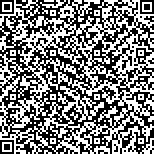下载中心
优秀审稿专家
优秀论文
相关链接
摘要

湖泊遥感作为一门新型交叉学科,是湖泊科学和遥感科学的重要分支。本文探讨了湖泊遥感科学的研究对象、内容和方法,通过梳理国内外总体研究进展,总结出湖泊遥感的5个发展趋势:(1)关注问题,从兴趣导向发展到问题导向;(2)观测手段,从地基遥感/中分辨率卫星发展到高分辨率/高光谱/无人机;(3)算法算力,从单机版经验/机理模型发展到云计算机器算法;(4)研究维度,从水体表层发展到垂向剖面;(5)研究区域,从单一/区域湖泊发展到国家/大洲/全球尺度。最后,指出了湖泊遥感学科未来的重点发展方向:(1)研制满足湖泊观测特点的静止卫星或小卫星集群;(2)发展湖泊水色遥感标准算法,建设全球湖泊卫星遥感监测网络;(3)加强全球变化背景下的湖泊盐度、温度和碳循环等遥感研究;(4)开展全流域统筹的湖泊天空地遥感监测和模拟研究。
Lake remote sensing is an important branch of limnology and remote sensing science as a new interdisciplinary discipline. In general, lake remote sensing includes water color remote sensing, lake water environment remote sensing, and lake hydrology remote sensing. The key to lake remote sensing is to initially study the lake’s specific problems to address individual or a type of sensitive factors. To accomplish the monitoring of these lake factors through remote sensing, the scientific questions about the preprocessing of remote sensing data, atmospheric correction, algorithm development, and validation, as well as the reconstruction of a long time series data record, were introduced one by one.With the reviews in published studies, this research discussed the research object, content, and method of lake remote sensing science and summarized five development progresses of lake remote sensing by reviewing the research progress, as follows:(1) Concerns: from interest-oriented to problem-oriented. Lake remote sensing has gradually expanded from the water color remote sensing to water environment, water ecology, and hydrology remote sensing, with diverse research fields.(2) Observation equipment: from ground-based remote sensing and medium resolution satellite to high-resolution/hyperspectral/drone. Satellite instruments for remote sensing of lakes have developed from scratch and achieved a development stage from low to high spatial, radiometric, and spectral resolution.(3) Algorithm and computing force: from stand-alone experience/mechanism model to machine learning algorithms based on cloud computing. The machine learning models have been used to retrieve water constituents in the lakes with complicated optical properties, which were difficult for traditional empirical and semi-analytical algorithms.(4) Research dimension: from surface to vertical profile. The remote sensing reflectance was related to the vertical distribution of lake water quality parameters (e.g., algae biomass) in the water column; aquatic remote sensing has been gradually developed in a 3D scale.(5) Spatial coverage: from individual/regional lake to national/continental/global scale. A number of aquatic parameters in national and global lakes, such as lake boundary, algae blooms, and water clarity, have been monitored by remote sensing data through cloud computing platforms.Finally, the future development directions of lake remote sensing are identified, as follows: (1) Launch geostationary satellites or small satellite constellation to satisfy the requirements for lake observation; (2) Develop standard algorithms of lake remote sensing and establish the global lake satellite remote sensing monitoring network; (3) strengthen remote sensing of salinity, temperature, and carbon cycle in lakes under the background of global change; (4) conduct research with respect to satellites, aircraft, and ground remote sensing monitoring and simulation over lakes and the entire watershed.

